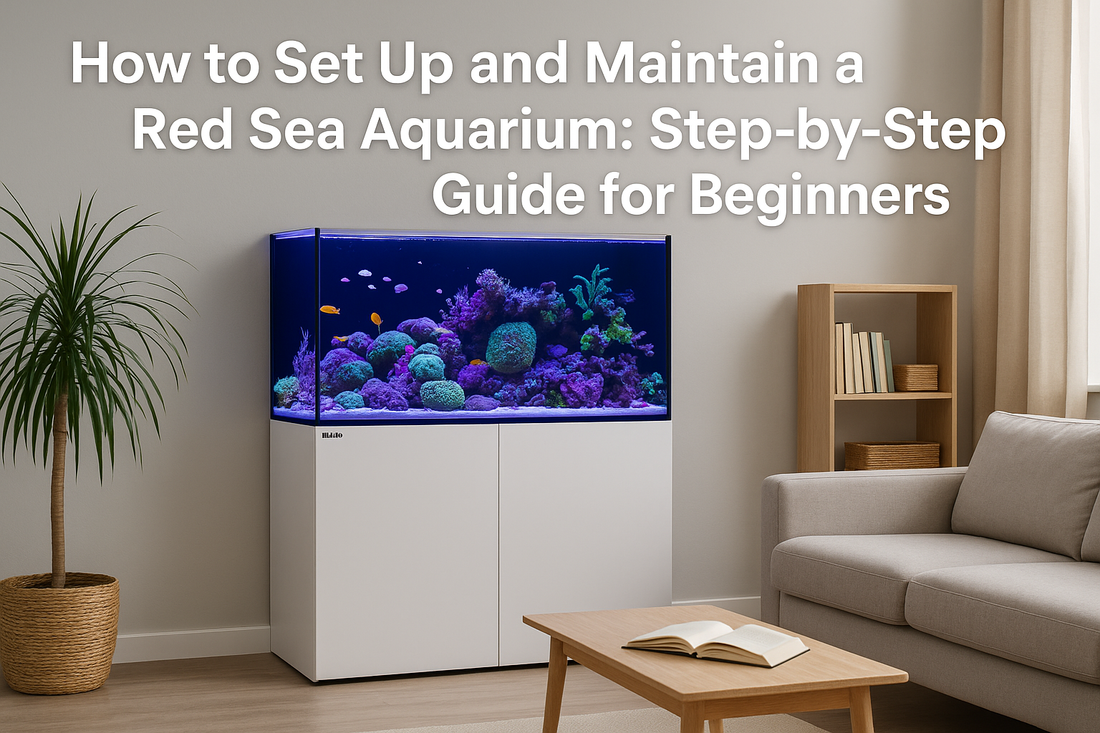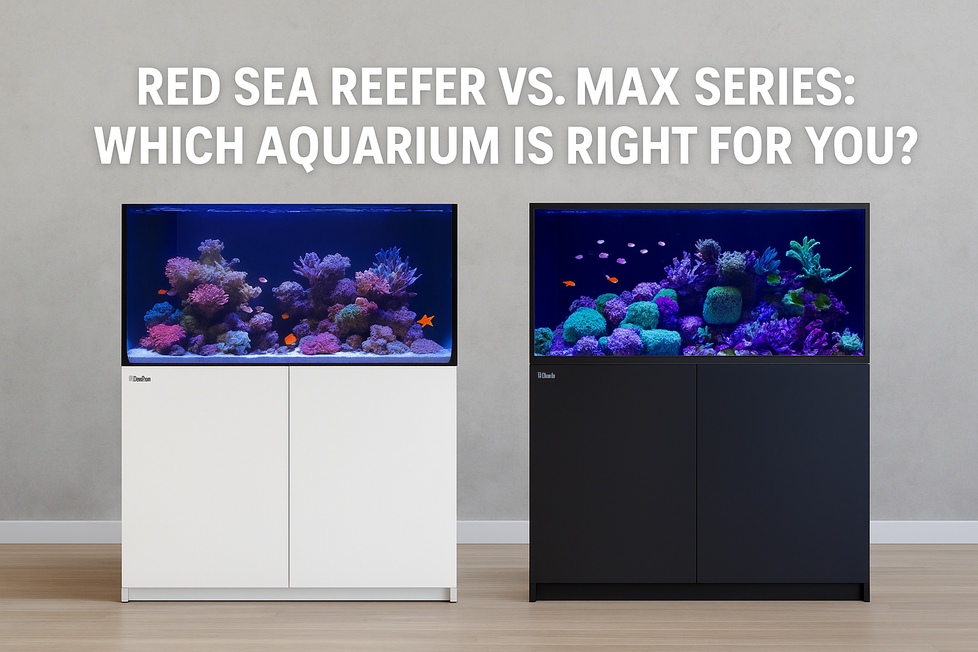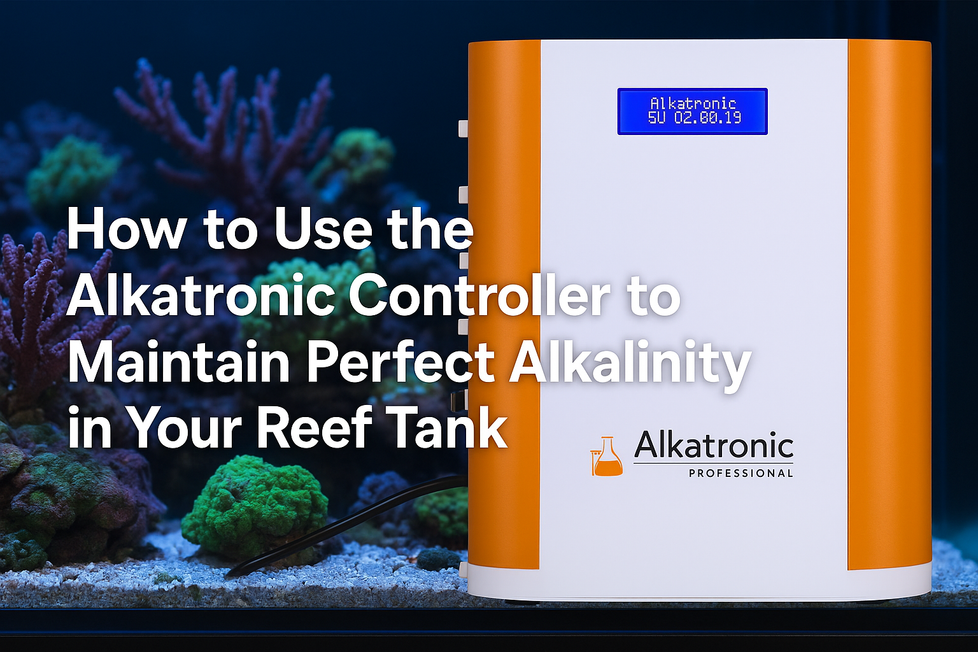Looking to start your first saltwater tank with a Red Sea aquarium? Whether you’ve purchased a sleek Red Sea Max Nano or a powerful Reefer G2+ system, setting up and maintaining a reef-ready tank can feel overwhelming. But don’t worry — this beginner-friendly guide walks you through each step of setup, cycling, stocking, and ongoing maintenance so you can build a thriving reef aquarium with confidence.
What You’ll Need Before Starting
Depending on your model (Max or Reefer), you may need different components. Here’s a general list:
Included in Most Red Sea Systems:
- Aquarium (rimless or enclosed)
- Cabinet stand
- Sump or rear filtration chamber
- Auto Top-Off (ATO) reservoir
- Plumbing kit (pre-measured for easy assembly)
Additional Equipment You May Need:
- Return pump (for Reefer systems)
- Heater and thermometer
- Protein skimmer (Reefer series only)
- ReefLED lights (included with Max series, optional for Reefer)
- Rock and substrate
- Salt mix (e.g., Red Sea Coral Pro Salt)
- Refractometer, test kits, and water conditioner
- Optional: dosing system, filter socks, media reactors
Tip: Always read your model’s manual before assembling. Red Sea’s modular design makes setup easier than most brands.
Step-by-Step Setup Guide
Step 1: Position & Level the Aquarium
- Choose a location away from direct sunlight and near a power source.
- Place the tank and cabinet on a level, stable surface to avoid pressure points.
- Use a spirit level — even slight tilts can cause stress fractures over time.
Step 2: Assemble the Cabinet & Plumbing
- Red Sea cabinets are pre-drilled and include clear instructions.
- Use silicone lubricant on the plumbing connections.
- Connect the overflow system, sump lines, and return plumbing.
- Check for leaks during a dry fit before filling.
Note: The Reefer’s silent downflow system uses an adjustable valve for fine-tuning water height.
Step 3: Add Rock & Substrate
- Rinse substrate (aragonite or reef sand) thoroughly to remove dust.
- Place rock first to create a stable aquascape, then add the sand around it.
- Use reef-safe epoxy or glue to secure rocks and avoid collapse.
Design Tip: Allow gaps for water flow and coral placement. The “bonsai” and “island” aquascape styles work well in Red Sea tanks.
Step 4: Fill the Tank With Saltwater
-
Mix RO/DI water with Red Sea Coral Pro Salt to 1.025–1.026 salinity.
-
Fill the display tank slowly to avoid disturbing the sandbed.
-
Check all plumbing again for drips or leaks.
Use a refractometer or digital salinity meter to confirm the right salinity.
Step 5: Install Equipment
-
Heater: Set to 25°C (77°F).
-
Return Pump & Skimmer: Install in sump or rear chamber.
-
Lights: Mount Red Sea ReefLED or compatible unit. Use the ReefBeat app to program light schedules.
-
Auto Top-Off: Fill the reservoir with RO/DI water.
Step 6: Cycle the Aquarium
This is crucial for establishing beneficial bacteria.
-
Add a bacterial starter (e.g., Red Sea Mature Starter Kit).
-
Monitor ammonia, nitrite, and nitrate levels using test kits.
-
Expect 2–4 weeks for full cycle.
Don’t add fish or coral until ammonia and nitrite are zero.
Adding Livestock: The Safe Way
Start with:
-
Hardy fish like clownfish, chromis, or firefish
-
Cleanup crew: snails, hermits, and shrimp
-
Soft corals: zoanthids, mushrooms, and leather corals
Avoid SPS and anemones until your tank is stable (3–6 months in).
Introduce new livestock gradually, ideally one group every 1–2 weeks to prevent ammonia spikes.
Ongoing Maintenance Schedule
A Red Sea system is designed for ease, but consistent upkeep is key.
Daily
-
Check ATO level and equipment operation
-
Feed fish (alternate frozen and pellet foods)
Weekly
-
Test salinity, temperature, pH, alkalinity
-
Clean skimmer cup and glass
-
Top off ATO reservoir
Biweekly
-
Perform 10–15% water change with pre-mixed saltwater
-
Replace or rinse mechanical filters
Monthly
-
Inspect plumbing, pumps, and hoses
-
Calibrate test equipment
-
Dose trace elements if keeping corals
Use the ReefBeat app to set reminders and automate lighting/dosing.
Troubleshooting Tips
-
Microbubbles in display tank? Check return pump fittings and sump water level.
-
Cloudy water? Ensure adequate filtration and avoid overfeeding.
-
High nitrate? Consider adding a refugium, reactor, or increase water change frequency.
Still stuck? Reach out to your Red Sea retailer like Charterhouse Aquatics for support and advice.
Best Red Sea Models for Beginners
|
Model |
Size |
Best For |
|---|---|---|
|
Red Sea Max Nano |
~75L |
Beginners, desktops, compact rooms |
|
Red Sea Max E-170 |
170L |
Plug-and-play with ReefLED & skimmer |
|
Red Sea Reefer 250 G2+ |
250L |
Intermediate reefers, more control |



